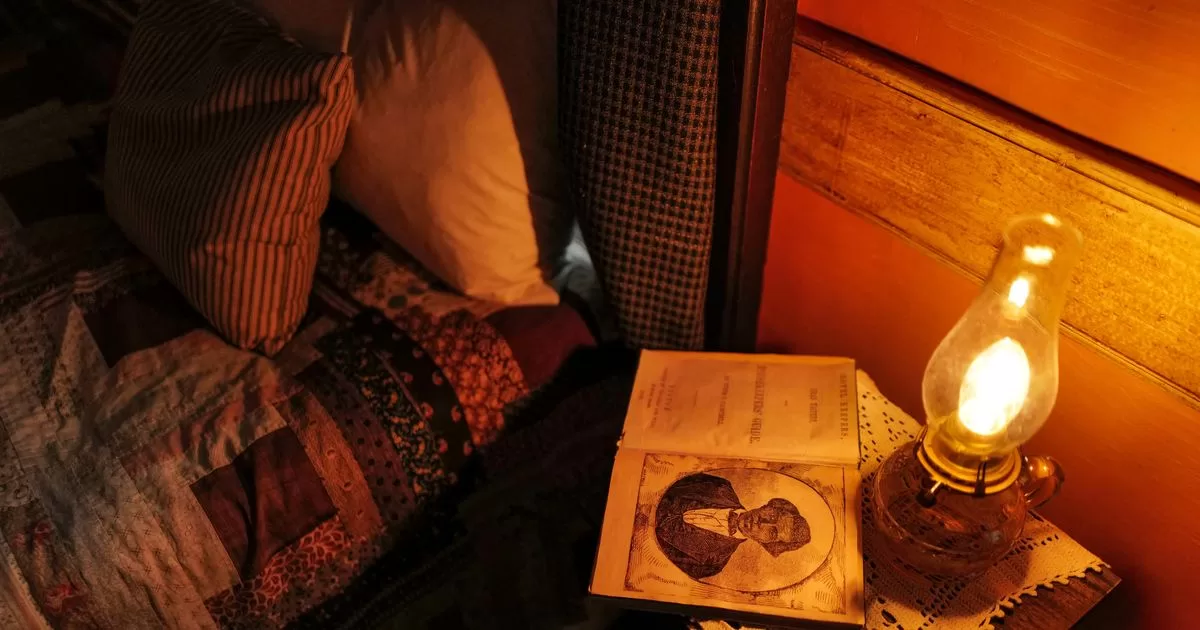NEW YORK.- From the Irish who fled the Great Famine of the 19th century in their country to the survivors of the Holocaust, the Tenement Museum preserves the memory of the immigrants who shaped New York City. Now, I will also tell the life of an African-American family, so that the story is more honest.
It is a narrow two-room apartment, with rustic floors and wooden furniture, impeccably organized, where visitors enter. The clothes are hanging in the kitchen, two beds occupy the other room. On the mantelpiece, a portrait of Abraham Lincoln, 16th president of the United States and architect of the abolition of slavery in 1865.
Welcome to the reconstruction of the space of Joseph and Rachel Moore, a black couple who stayed here, without running water, along with three other residents: Jane, sister-in-law from Rachel’s first marriage, Rose, an Irish immigrant, and their mixed-race son Louis. , 14, said Kathryn Lloyd, who is leading a pilot visit, before the official launch of the exhibition after Christmas.
Joseph worked as a waiter or coachman, depending on the season, Raquel was a servant to wealthy families.
“They arrived in New York quite young and lived in Manhattan during one of the most tumultuous decades in the country’s history, during the Civil War (1861-1865) (…) and while black Americans were gaining rights for the first time,” said Lloyd, vice president of museum programs.
Accused of rewriting history
Its history enriches the offerings of the Tenement Museum, where 200,000 visitors a year immerse themselves in some of the destinies of millions of immigrants who settled in New York in the 19th and 20th centuries. A mission that resonates as the megacity struggles to urgently accommodate more than 100,000 new immigrants who arrived last year from Latin America.
The museum has a particularity: everyone, from the Schneiders, German owners of a brewery between 1860 and 1880, to the Baldizzis, Italian immigrants who lived through the Great Depression of the 1930s, really lived at 97 or 103 Orchard Street, the two brick buildings located in the Lower East Side neighborhood, where their apartments have been recreated.
All except Joseph and Rachel Moore, who lived in a similar building in the SoHo district, a 20-minute walk away, where the African-American community was established, with its own parishes and newspapers.
In the city records, Joseph Moore appears with the mention “col’d”, which refers to “colored”, right next to another Joseph Moore, also a waiter but Irish, whose story of arrival to escape a great famine is another of those included in the sample living place.
When the project was announced, the Tenement was accused of rewriting history in an article in the conservative New York Post because the black, American-born Moores had not lived on Orchard Street.
“American identity”
But after the visit, Vanessa Willoughby, 28, a Harlem resident who works in finance, said she was delighted that a black family was included in the depiction of New York’s working classes in the late 19th century. The museum also hosts guided tours of the neighborhood, including one on African-American spaces.
For Lloyd, telling the Moores’ story is crucial to understanding what drove the families to move within the United States and better understanding American identity.
Rachel Moore, the first generation of her family to be born free and not enslaved like their ancestors, arrived in New York in 1847 from a rural corner of the region; Joseph arrived ten years later from the neighboring state of New Jersey, where slavery had not yet been abolished, unlike New York. The risk of being captured for sale may have influenced his decision, the museum assumes.
But in July 1863 the draft riots broke out, revolts against enlistment in the army during the Civil War that turned into racist pogroms against Americans in New York. The violence left at least 120 dead and forced 20% of African Americans to leave the city.
The museum lost track of Rachel after 1870 and found Joseph in New Jersey, where he returned to live years later. Her apartment is described in a newspaper article from the time, along with a portrait of Abraham Lincoln.
FUENTE: AFP





